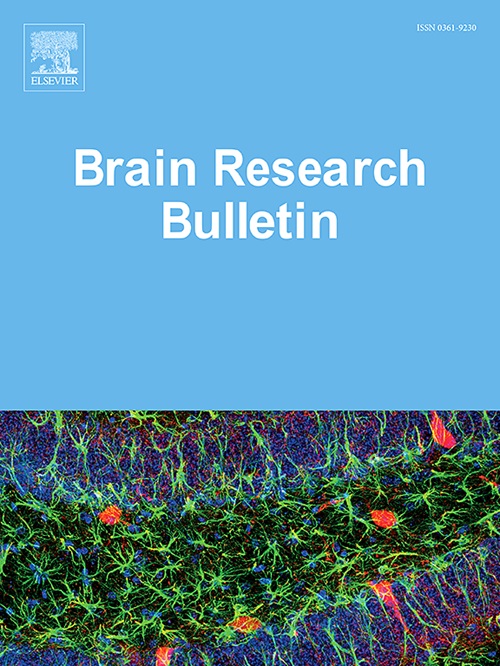IL-2/anti-IL-2 complexes attenuates neuroinflammation and neurodegeneration in mice of experimental Parkinson's disease
IF 3.5
3区 医学
Q2 NEUROSCIENCES
引用次数: 0
Abstract
Parkinson’s disease (PD) is the second most common neurodegenerative disease, with motor and non-motor symptoms being its main clinical manifestations. Neuroinflammation has been shown to involve in pathogenesis of PD. Regulatory T cells (Tregs) in PD exhibited reduction in number and suppressive activity. Existing methods to increase the Tregs remains challenging for clinical application because of the difficulty in Tregs expanding or serious side-effects. Therefore, new approaches still need to be explored to balance the amount and activity of Tregs. In this study, we assessed the protective effects of IL-2/anti-IL-2 complexes (IL-2C) on mouse models of PD induced by 1-methyl-4-phenyl-1,2,3,6-tetrahydropyridine (MPTP). And the results showed that IL-2C significantly increased the number of Tregs both in spleen and brain, accompanied by reduced nigral dopaminergic neuron loss and behavioral defects. Besides, IL-2C also attenuated neuroinflammation as observed by diminished glial activation, fewer infiltration of CD4+ and CD8+ T cells and reduced pro-inflammatory cytokines releasing in the nigral region. Moreover, the protective effects of IL-2C were abolished by pre-treatment of anti-CD25 antibody (PC61), which was used to delete the Tregs. In summary, our results demonstrate that IL-2C-induced Tregs expansion attenuates the dopaminergic neurons loss and the neuroinflammatory response in vivo, suggesting that IL-2C maybe a promising therapeutic target for PD.
IL-2/抗IL-2复合物减轻实验性帕金森病小鼠的神经炎症和神经退行性变
帕金森病(PD)是第二常见的神经退行性疾病,以运动和非运动症状为主要临床表现。神经炎症已被证实参与帕金森病的发病机制。PD中调节性T细胞(Tregs)数量减少,抑制活性降低。现有的增加Tregs的方法在临床应用中仍然具有挑战性,因为Tregs扩展困难或副作用严重。因此,仍然需要探索新的方法来平衡Tregs的数量和活性。在本研究中,我们评估了IL-2/抗IL-2复合物(IL-2C)对1-甲基-4-苯基-1,2,3,6-四氢吡啶(MPTP)诱导的PD小鼠模型的保护作用。结果表明,IL-2C显著增加了脾脏和脑内treg的数量,同时减少了黑质多巴胺能神经元的丢失和行为缺陷。此外,IL-2C还可以通过降低神经胶质活化,减少CD4+和CD8+ T细胞的浸润以及减少黑神经区促炎细胞因子的释放来减轻神经炎症。此外,IL-2C的保护作用被抗cd25抗体(PC61)预处理,用于删除Tregs。综上所述,我们的研究结果表明,IL-2C诱导的Tregs扩增减轻了体内多巴胺能神经元的损失和神经炎症反应,表明IL-2C可能是PD的一个有希望的治疗靶点。
本文章由计算机程序翻译,如有差异,请以英文原文为准。
求助全文
约1分钟内获得全文
求助全文
来源期刊

Brain Research Bulletin
医学-神经科学
CiteScore
6.90
自引率
2.60%
发文量
253
审稿时长
67 days
期刊介绍:
The Brain Research Bulletin (BRB) aims to publish novel work that advances our knowledge of molecular and cellular mechanisms that underlie neural network properties associated with behavior, cognition and other brain functions during neurodevelopment and in the adult. Although clinical research is out of the Journal''s scope, the BRB also aims to publish translation research that provides insight into biological mechanisms and processes associated with neurodegeneration mechanisms, neurological diseases and neuropsychiatric disorders. The Journal is especially interested in research using novel methodologies, such as optogenetics, multielectrode array recordings and life imaging in wild-type and genetically-modified animal models, with the goal to advance our understanding of how neurons, glia and networks function in vivo.
 求助内容:
求助内容: 应助结果提醒方式:
应助结果提醒方式:


